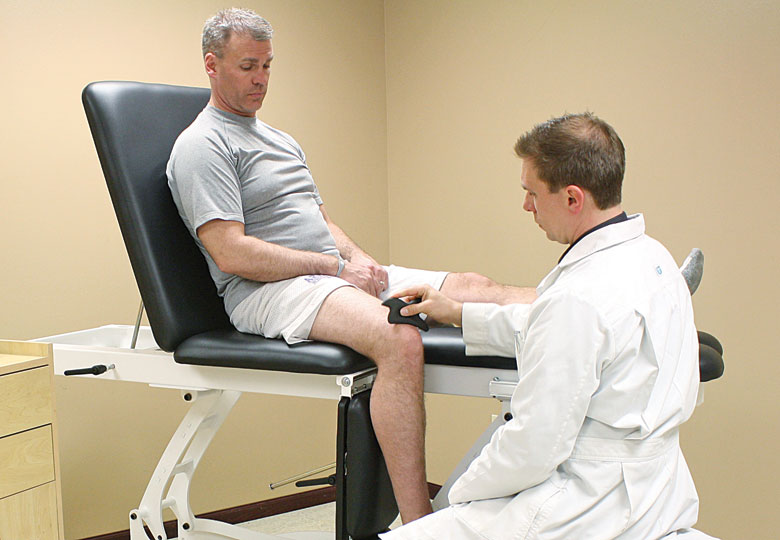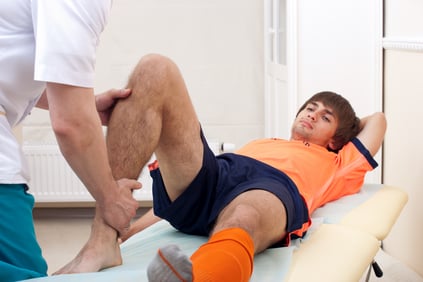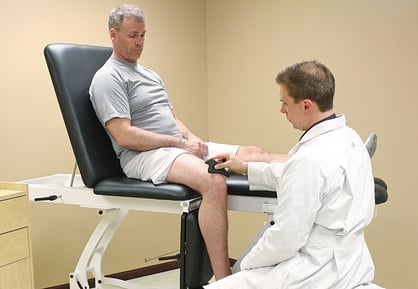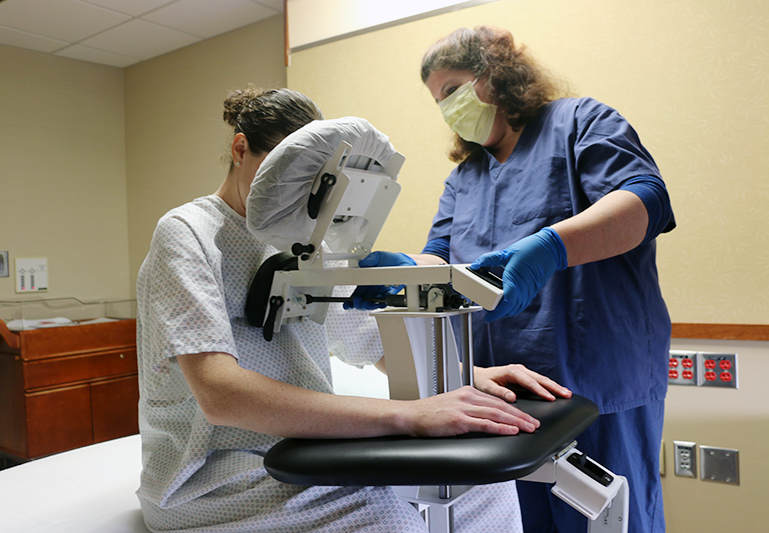Typically by the age of 20 athletes have an accumulation of soft-tissues injuries from strains and pulls, to sprains involving joints. As such, many of the athletes that come to me are actively trying to rehabilitate themselves from an injury. My therapeutic approach for working with athletes involves bringing the core distortion into balance, which can not only rehabilitate their injuries, but also expand their potential.
Spiral Twist
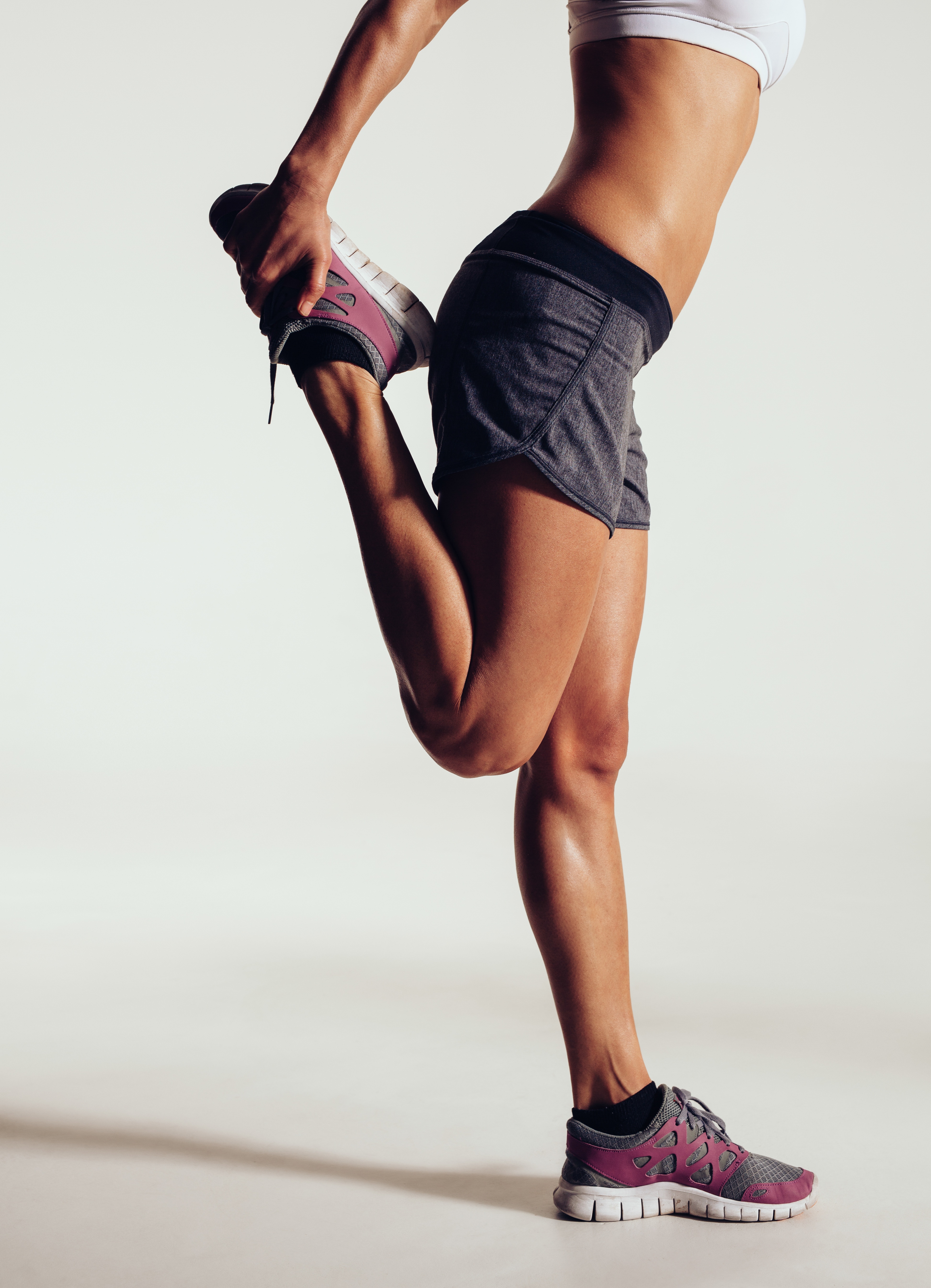 via shutterstock.com |
When we examine the structure of these athletes we find that they have a spiral twist, which i call the "core distortion." This runs from the top of their heads to their feet and includes an anterior/posterior rotation of the iliums, which creates an imbalance in leg length. This results in a tipped sacrum so the base of the spine is not level, thus producing exaggerated curvatures of the spine. Coming off the spine are the ribs that form the thorax, which is also imbalances due to the exaggerated curvatures of the spine. This extends all the way up through the neck and shoulders. The imbalance in the shoulders affects the arms, which are generally internally rotated all the way down through the hangs and wrists.
Looking again at the rotation of the iliums, the result is the long-leg/short-leg discrepancy. We find significant distortions in the legs to accommodate ilium imbalance, with the greatest distortions seen at the joints from the hips down to the bones in the feet.
Additionally, the arrangement of the cranial bones in the cranium reflects the same imbalances and distortions found throughout the body. There are specific relationships between cranial bones and the structures of the core distortion in the body described above.1
The greater the imbalance, the greater the loss of strength, flexibility and function, and the more likely the soft tissue associated with the structural distortion would be injured. In addition, after the injuries occurred, the soft tissue would not be able to help maintain structural balance, which then would lead to a greater structural imbalance and larger risk of future injury.
Charles, the sprinter
This can be easily seen in Charles' case- a 41 year old sprinter, who repeatedly injured his semi-tendinosus and medial head of the biceps femoris of his left hamstrings. As such, his times in the 100- and 200-meter sprints had dramatically fallen.
When he injured them again while training, he was really frustrated and sought treatment with me. Structural evaluation revealed that his left ilium was anteriorly rotated, and right ilium posteriorly rotated. With the left ilium anteriorly rotated there was a functional long left leg, with the knee medially rotated and hyperextended, and the lower leg and foot laterally rotated in compensation.
The left foot was also collapsed into eversion. Looking at only this aspect of Charles' structure, there was a lot to be gained in his rehabilitation by bringing his left ilium out of its anterior rotation and lessening the leg-length discrepancy.
Kinesiology, both applied and functional, showed a different aspect of the problem. Using functional kinesiology to test the strength of the hip flexors and quadriceps revealed a significant weakening of more than 50 percent due to the more than 15 degrees rotation of the ilium. Testing the semimembranosus and semitendinous of the hamstrings also revealed a significant weakening, due to both a rotation of the ilium and the medial rotation of the knee. Using applied kinesiology (testing with a strong muscles while challenging another muscle or joint) the medial attachments of both the adductors and the hamstrings at the knee tested strong; the lateral attachments of the hamstrings, biceps femoris at the knee tested weak.
Thus, it was clear that the part of the reason Charles' hamstrings were being injured was their inherent weakness, which stemmed from the structural imbalance. The weakness was also more extensive due to the distortions through the knee, subsequently affecting performance.
Stabilizing the knee
|
|
The muscles that needed to stabilize the knee were significantly weakened and susceptible to injury, which would also include a lack of stability of the knee and potential dislocation leading to sprain or worse. This was further stresses by the misalignment of the medially rotated knee and laterally rotated lower leg, which resulted in a lateral rotation and eversion of the foot.
Again, functional kinesology was used to test the gastroc soleus, which tested weak contributing to the collapsed arch. The peroneus longus and the plantar fascia also tested weak on the medial side using applied kinesology.
This evaluation of the knee and lower leg in conjunction with the anterior rotation of the left ilium showed how the imbalances of the core distortion were contributing to the injuries of the hamstrings.
In fact they were in themselves starting to become as big a problem as the injuries that were occurring in the hamstring. The knee going medial and the lower leg going lateral were producing significant strain on the knee along with the lack of supporting muscles necessary to stabilize the knee.
Consequently, there was a lack of strength and flexibility and a weakened alignment that could fall further into misalignment when placed under more stress.
This increased misalignment could take place suddenly and rapidly causing a sprain or a dislocation which could result in a tearing of the tendons, ligaments and cartilage of the knee, or uneven wear and tear on the cartilage and ligaments from repetitive use in training.
this would slowly increase the imbalance and damage to the soft tissue until there was enough damage that it would become a significant issue. The collapsing arch in the foot and the stress put on the planter fascia was again an imbalance creating an injury.
It was only a matter of time before the plantar fascia would become inflamed causing an injury serious enough to stop training and limit performance.
One of the quickest ways to bring back the body into balance and out of the core distortion is the application of the cranial/structural core distortion release (CSCDR).1 The almost immediate increase in structural balance allows for the majority of the musculature that is working with severe limitation to regain 70-80 percent of its structural strength. This is due to the actual structural balance that is achieved, allowing the lever function of the muscles to operate at a higher capacity. In the case of Charles' hamstrings, their strength increased after myosacial work released the scar tissue and adhesion that had built up from previous injuries.
|
|
The additional soft-tissue work around Charles' knee was necessary to again release myofacsial holding patterns, adhesion and chronic shortened in the tissue that had maintained the medial rotation and the hyper extension and also normalize some of the pressures in the arch.
Working around the lateral malleolus and peroneus muscles that had been shortened to maintain and support the lateral rotation of the foot would bring the foot back into balance. There were many other imbalances corrected with the CSCDR that would result in better range of motion, function and strength.
Case Results
Charles' left leg returned to full ranged of motion and strength when running. In addition, muscles and joints that were in the process of becoming injured were balanced and released from the injury patterns and bringing them back to full function. Once his leg had been rehabilitated there was a dramatic increase in his performance potential.
After rehabilitative structural therapy is accomplished with athletes, their careers will be extended. Instead of accumulating more imbalances and weaknesses inherent in core distortion, when the CSCDR is applied, releasing the core distortion, their whole body finds a stronger alignment and muscles can do their job of stabilizing joints so that lifting, running, etc., can be done pain free.
Again, with so many issues that can be easily rehabilitated by releasing the core distortion, athletes will be able to realize greatly increased longevity in their careers.
This blog was written by Don McCann, MA, LMT, LMHC, CSETT with structuralenergetictherapy.com and the original article can be found here on Massage Today.com.
References:
1. McCann D. "The Evolution of Releading the Core Distortion." Massage Today, July 2014; 14(7).
